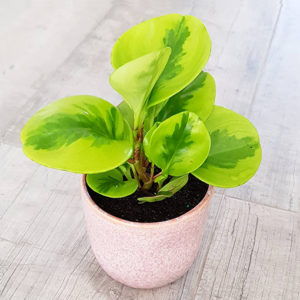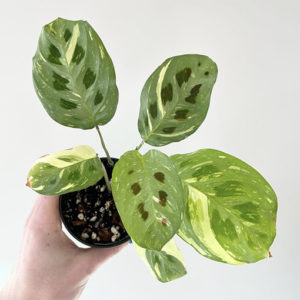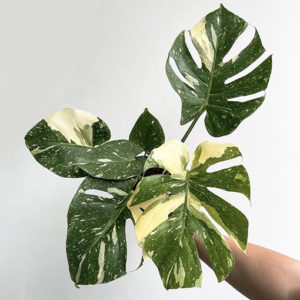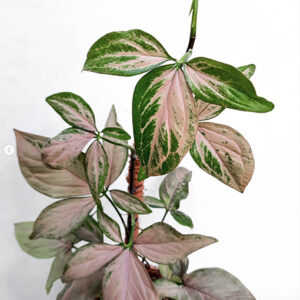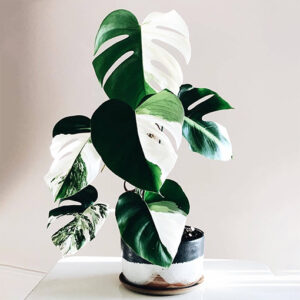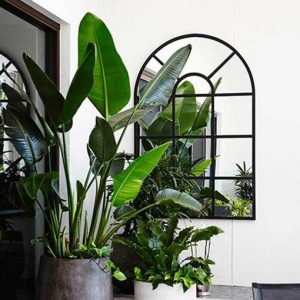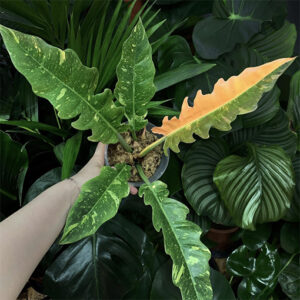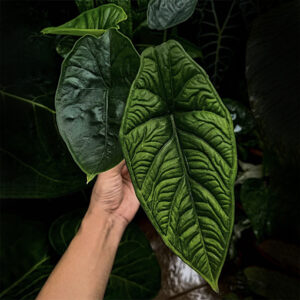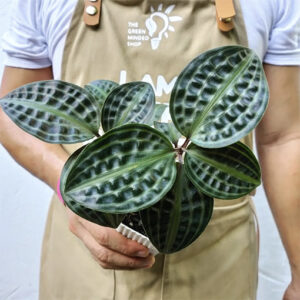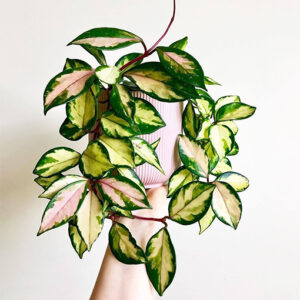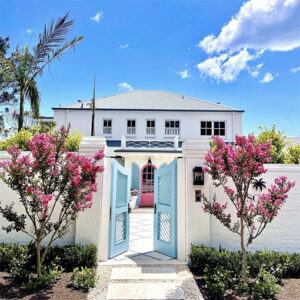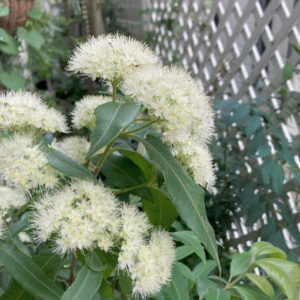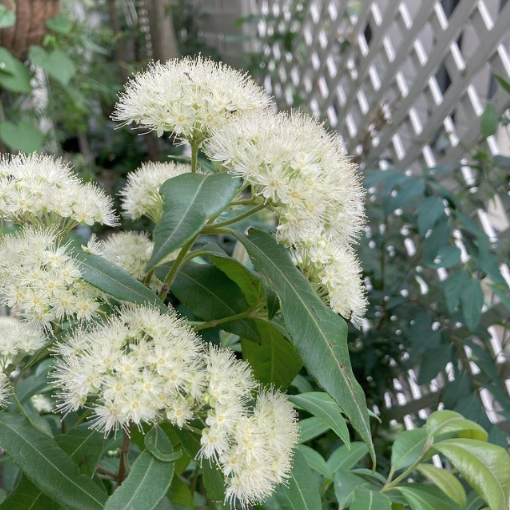
Hail to the “Queen of the Lemon Herbs” 👑✨ The Lemon Myrtle – Backhousia Citriodora! This Australian native will put you in a better mood with its refreshing lemony scent leaves and flowers💮🍃
📷: @green.y0207
Where to buy a Lemon Myrtle – Backhousia Citriodora in Australia?
Why we’re glad you asked as we do our best to have a steady supply of Lemon Myrtle in stock.
Lemon Myrtle – Backhousia Citriodora Introduction
The Lemon Myrtle is a popular Native small Tree/shrub, with dense foliage that can be used for screening, hedges or on its own as a nice feature plant with fantastic bloom and scent. As the name itself boasts, (citriodora – citrus smell) Backhousia citriodora is known as the “Queen of the lemon herbs”. Commonly known as lemon myrtle or lemon scented myrtle or sweet verbena tree, it is endemic to subtropical rainforests of central and south-eastern Queensland. Planting a lemon scented myrtle in your garden can fill it with citrusy and sweet scents. A naturally occurring distribution of lemon myrtle can be seen from Mackay to Brisbane. Lemon myrtle was used by Indigenious Australians in cuisines and as a healing tonic.
Backhousia citriodora enjoys tropical to warm and temperate climates and is an evergreen shrub. Commercial plantations of lemon myrtle are found in Queensland and throughout the North coast of New South Wales where the oil and leaves are harvested for flavouring and its nutritional properties for foods, teas and syrups, as well as soaps, shampoos, toothpastes and for medicinal products and natural cleaning products to name just a few. Backhousia citriodora can grow up to 6 meters but usually is maintained at lower heights by pruning. The evergreen glossy foliage of lemon myrtle tree has a strong citrus scent when crushed. Flowers appear as fluffy cream colored tufts at the end of hanging branches. Backhousia citriodora produces prolific flowers in summer.
Lemon Myrtle – Backhousia Citriodora Planting
Lemon myrtle is a slow grower, so patience is a must!! They may take an average of 3-4 years to attain maturity. The Lemon myrtle tree can be grown out from seeds or from regular cuttings. The seed germination takes quite a long time, so soak them overnight in water and sow in nutrient enriched soil. Place the setting somewhere warm and sunny and sprinkle water daily to keep the seeds moist. Germination may take 2-8 weeks.
If Backhousia cuttings are used, remove the leaves and branches off the base at least 3cm up. Prepared stem can be place in a pot with a mix of potting mix and soil. Water regularly and keep in a warm and lit space.
Backhousia grows taller in warm areas, while spreading out its branches in colder areas. Height and shape can easily be maintained by pruning. Lemon myrtle can be planted as a hedge or used for screening or as a fragrant addition to your lovely garden.
Lemon Myrtle – Backhousia Citriodora Lighting & Position
The thick lush foliages of lemon myrtle enjoys tropical sun, thus place it in a well-lit space, preferably under full sun to partial shade. If you prefer to place Backhousia citriodora as an indoor variety positioning it close to window sill or at a place with ample sunlight will be a good choice.
Juvenille Backhousia citriodoras are slightly frost-tender. Growing them in sheltered positions or under semi-shade is a great solution for this problem. The Australian National Botanic Gardens, in the Rainforest Gully in Canberra recorded temperatures as low as -8ºC during Winter have had success with several specimens of Backhousia citriodora provided by tree canopy and shade from adjacent shrubs.
Lemon Myrtle – Backhousia Citriodora Watering
Lemon myrtle prefers to grow in a well drained and moist soil with plenty of organic matter. Reduce watering during cooler months and provide regular mulching during summer months to keep the soil moist. Care should be taken to prepare the mulching slightly away from the stem as roots grow up through the mulch in search of air. This can cause the roots to “girdle” or wrap around the trunk, choking the tree by cutting off its water supply.
Lemon Myrtle – Backhousia Citriodora Fertiliser
To maximize growth and establishment young lemon myrtle trees apply a mixture of organic seaweed extract and aminogro every 2-3 weeks to. The same preparation can be applied for potted lemon myrtles too. A happy Backhousia citriodora can be grown in your plant collection if manured every Spring and Autumn. If you have nutritionally low soil you can also add some pelletised organic fertiliser topped with mulch.
We recommend using our Plant Food available here.
Lemon Myrtle – Backhousia Citriodora Propagation
Lemon scented myrtle can be propagated from stem cuttings preferably of tip cuttings taken in March. Prune away the branches and leaves of the selected branch and place it in a rooting solution overnight. Then the shoot can be planted in a moist and well mulched soil. Lemon myrtle may produce small hanging branches that take root where they touch the ground. These branches can also be severed and replanted.
Lemon Myrtle – Backhousia Citriodora Vulnerability to pests and diseases
The citrusy odour of Lemon myrtle provides a natural resistance to local pests and diseases. But they can be affected by sooty moulds if grown in proximity to other native trees that act as a carrier of it.
Myrtle rust has become a serious disease among several native food crops, including lemon myrtle. This fungal disease if left untreated, causes deformed leaves, heavy defoliation of branches, dieback, stunted growth and even plant death. There might be occasional attacks of native monolepta beetle (Monolepta australis) on tender leaves. However permanent damage has not been reported.
For more information on how to manage common plant pests head to our blog here.
Lemon Myrtle – Backhousia Citriodora Pruning
Lemon scented myrtle should to be pruned regularly in the first two years to provide shrubby appearance and to increase leaf production. A top-heavy lemon myrtle can easily break off at the base in storms or heavy wind when in an unsheltered location.
Popular Lemon Myrtle – Backhousia Citriodora Varieties
Based on the oil and citral yield there are two main varieties, limpinwood selection and eudlo clone. The first variety of Backhousia citriodora has high biomass production, high oil yield as well as high citral content and is generally the most preferred amongst gardeners. While the later has slightly lower biomass, oil and citral yield.
Lemon Myrtle – Backhousia Citriodora Design Tips
The Lemon Myrtle can be a fairly versatile small tree from a design perspective. It can be used as a formal hedge, a natural screen or as a single showpiece plant. In Queensland it is often used in urban landscaping or in parks, celebrated for its prolific flowering and charming scent. The cream blooms will look great against purple flowering plants and the choice of best fit will depend on the application. If allowed to grow as a tree, with its trunk on show, strappy plants like liriope or natives like Daniella tasmanica with their rich blue/purple berries can be a nice accompanying understory plant. In more formal gardens where it’s being used as a hedge, Purple Hydrangeas in front can be a great option. Or perhaps you want to create more of a native tropical rainforest garden, where it will be a great mid-storey option.

